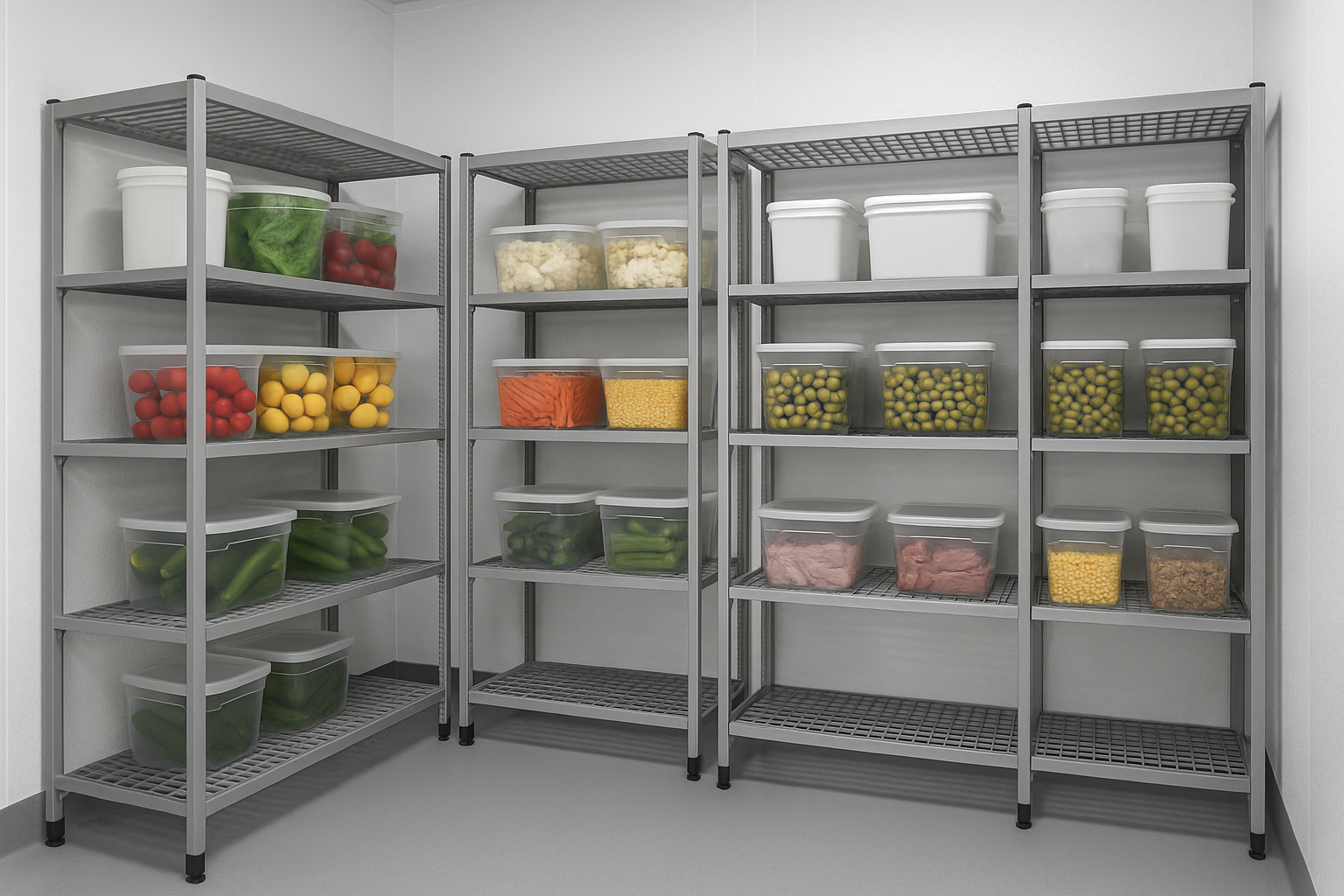If you own or manage a restaurant, café, or supermarket, efficient and safe food storage is essential to your success. One of the most overlooked yet crucial elements of your commercial kitchen or food storage setup is coolroom shelving.
At Hospitality Connect, we supply and support premium coolroom shelving systems from trusted brands like Metro and Atlas, helping Australian businesses store food safely, improve hygiene, and maximise their cold storage capacity.
Whether you’re fitting out a new venue or upgrading an existing cold storage space, this guide will help you understand the best types of coolroom shelving, how to install them, and how to keep your food safe and organised.
What Is Coolroom Shelving and Why It Matters
Coolroom shelving is specially designed for use in temperature-controlled environments like cold rooms, fridges, and freezers. Unlike ordinary shelving, it must withstand constant humidity, temperature changes, and heavy loads, while maintaining food safety standards.
High-quality shelving systems from Metro and Atlas, available through Hospitality Connect, are made from rust-resistant materials such as epoxy-coated wire or polymer finishes. They provide:
-
Long-lasting durability even in cold, damp conditions
-
Easy-to-clean surfaces to maintain hygiene
-
Adjustable configurations for maximum flexibility
Choosing the right shelving is critical — it helps maintain consistent airflow, prevents contamination, and makes your coolroom more efficient.
Types of Coolroom Shelving
There are several shelving styles available, each suited to different environments and storage needs.
1. Wire Shelving (Metro & Atlas Favourites)
Wire shelving is the most popular option for restaurants and supermarkets.
✅ Advantages:
-
Excellent airflow for consistent cooling
-
Lightweight yet strong construction
-
Corrosion-resistant finishes like Metro’s Super Erecta® and Atlas epoxy-coated steel
-
Easy to assemble and reconfigure
Perfect for: Restaurants, cafes, and commercial kitchens needing hygienic and flexible storage.
2. Polymer Shelving
Ideal for high-moisture areas, polymer shelving resists rust and is easy to clean.
Metro’s MaxQ™ or MetroMax i® polymer shelving are industry leaders — built to last, easy to sanitise, and backed by long warranties.
Perfect for: Butchers, supermarkets, and seafood operators needing maximum hygiene.
3. Mobile Shelving Units
Need flexibility? Mobile shelving allows you to move stock or reconfigure storage layouts effortlessly.
Atlas mobile systems with heavy-duty castors are a great choice for dynamic kitchens that need adaptable setups.
Perfect for: Cafés, bakeries, and prep kitchens where space efficiency is key.
How to Choose the Right Coolroom Shelving
Selecting the best shelving depends on your food type, space, and workflow. Here’s how to decide:
-
Size of Your Coolroom: Smaller coolrooms benefit from vertical stacking or mobile racks. Larger coolrooms should use wide-spaced, adjustable systems like Metro Super Adjustable™ shelving.
-
Type of Food Stored: Dry goods do well on wire shelves; wet or perishable products need polymer or epoxy-coated shelving.
-
Frequency of Access: For frequent access, opt for mobile or open-shelf systems to save time.
-
Load Requirements: Heavy food crates, meats, or drinks need high-capacity shelving like Atlas heavy-duty racks.
At Hospitality Connect, our team can help you design a coolroom layout that meets HACCP standards and maximises usable space while ensuring optimal food safety.
How to Install Coolroom Shelving
Installing coolroom shelving is straightforward when you have a plan. Follow these basic steps for success:
-
Measure your coolroom — height, width, and available wall space.
-
Choose your shelving brand and configuration — Metro for premium corrosion resistance or Atlas for robust, budget-friendly options.
-
Assemble shelves securely using provided clips, posts, or bolts.
-
Vary shelf heights to accommodate different container sizes.
-
Ensure proper ventilation around shelves to maintain even air circulation.
Hospitality Connect can assist with layout design and installation support, ensuring your new shelving meets both safety and operational needs.
Tips for Using Coolroom Shelving Effectively
A well-organised coolroom saves time, reduces waste, and keeps your staff efficient. Here’s how to get the most out of your setup:
-
Label everything clearly and separate raw and cooked products.
-
Keep heavier items on lower shelves for safety.
-
Leave clearance around vents for consistent temperature control.
-
Regularly clean and inspect shelves for signs of wear or residue buildup.
Our Metro and Atlas shelving systems are designed with snap-in components that make cleaning and reconfiguration quick and easy — perfect for busy hospitality operations.
Are Coolroom Work Tables Necessary?
Absolutely. Coolroom work tables and trolleys allow staff to prep, move, and organise stock efficiently within temperature-controlled spaces.
Pairing Metro coolroom shelving with stainless steel work tables from Hospitality Connect creates a seamless cold storage system that maximises workflow and hygiene.
Coolroom vs Cold Storage Room: What’s the Difference?
While the terms are often used interchangeably, there’s a difference:
-
Coolrooms maintain temperatures just above freezing, ideal for perishables.
-
Cold storage or freezer rooms are designed for below-freezing temperatures, ideal for long-term storage.
Both require high-quality shelving like Atlas or Metro systems that can handle extreme conditions and heavy loads without corroding or warping.
Conclusion: Store Smarter with Hospitality Connect
Investing in quality coolroom shelving is essential for maintaining food safety, organisation, and efficiency in any commercial kitchen or supermarket.
At Hospitality Connect, we supply durable and hygienic shelving solutions from Metro and Atlas, trusted by hospitality professionals across Australia. Whether you’re upgrading your restaurant, fitting out a supermarket, or designing a new coolroom, we’ll help you choose the perfect system to fit your needs — saving time, space, and money.










